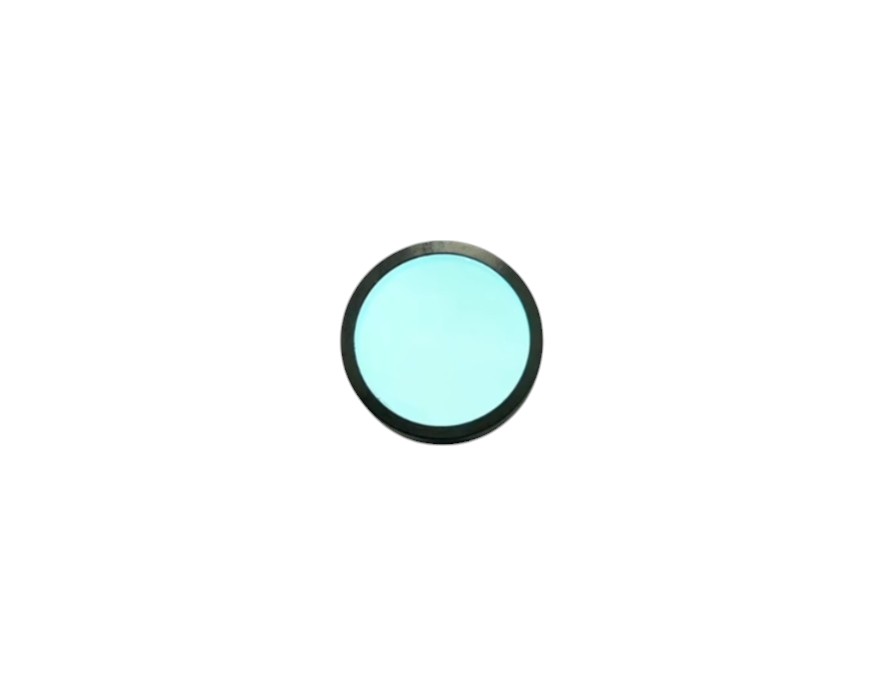

280/8nm UV Transmitting Bandpass Filter
280/8nm UV Transmitting Bandpass Filter is an high performance optical filter design optimize for UV detecting. Coligh specializes in high-volume production of UV bandpass filters。
- Center Wavelength 280nm
- FWHM 8nm
- 200-1200nm OD5 deep blocking depth
Products Categories
Get A Free Quote
280/8nm UV Transmitting Bandpass Filter Description
280/8nm UV Transmitting Bandpass Filter is specially designed for UV detection sensors.
- Central wavelength 280nm+/-2nm, bandwidth 8+/-2nm Highly selective transmission for UVB band
- The transmittance in the passband is greater than or equal to 25%, and the cut-off depth OD5 in the range of 200-1200nm can significantly improve the detection sensitivity and dynamic range
- We use quartz substrate and ion-assisted deposition (IAD) hard coating, which can ensure long-term use and long-term transmittance parameters.
- There are multiple sizes to choose from: φ9mm, φ10mm, φ12mm, φ12.7mm, φ25.4mm, thickness 2-6mm, and custom sizes are also accepted
280/8nm UV Transmitting Bandpass Filter Technical Datasheet
| Parameter | Specification |
| Center Wavelength (CWL) | 280 nm ± 2 nm |
| Full Width at Half Maximum (FWHM) | 8 nm ± 2 nm |
| Peak Transmission | ≥ 25% |
| Blocking Range | 200 – 1200nm |
| Optical Density (OD) | OD5 |
| Angle of Incidence (AOI) | 0° |
| Substrate Material | UV Fused Silica, K9,sapphire |
| Thickness | 2-6mm |
| Size | Ø9mm, Ø10mm, Ø12mm, Ø12.7mm, Ø25.4mm or customizable |
| Edge Treatment | Blackened and chamfered edges |
| Environmental Durability | Compliant with MIL-STD-810G |
| Other avaliable wavelength | 193nm, 200nm, 214nm, 216nm, 220nm, 240nm, 254nm, 260nm, 280nm and much more |
| Filter Type | Multilayer Interference Bandpass Filter |
| Coating Technology | Ion-Assisted Deposition (IAD) |
| Surface Quality | 80-50, 60-40, 40-20 (per MIL-PRF-13830B) |
280/8nm UV Transmitting Bandpass Filter Applications
- Protein concentration detection
Protein concentration detection is a routine operation in biological experiments, relying on the ultraviolet absorption characteristics of tryptophan and tyrosine at a wavelength of 280nm. However, stray light can interfere with absorbance readings, resulting in data deviation. 280/10nmn UV bandpass filter accurately transmits 276-284nm ultraviolet light, excludes interference from other wavelengths, and ensures that absorbance measurements only reflect the absorption signal of the target protein. This ensures the accuracy of the test results - Environmental monitoring
NO₂ is an important indicator of air pollution. Its ultraviolet absorption peak is located near 280nm, but the absorption peaks of coexisting gases such as ozone and volatile organic compounds may overlap and interfere with monitoring results. The 280/10nm optical filter only allows 276-284nm narrowband light to pass, shielding other bands to achieve highly selective extraction of NO₂ characteristic signals. - Semiconductor manufacturing
The photolithography machine needs to use high-purity 280nm ultraviolet light to expose the photoresist, but the beam output by the laser may contain stray wavelengths, resulting in blurred or defective graphics. The 280/10nm filter filters out stray light with wavelengths other than 280nm, ensuring the purity of the exposure beam wavelength and improving the resolution and edge clarity of the photoresist. Improve the yield rate - Food testing
Synthetic pigments or antibiotics have characteristic absorption near 280nm, but the food matrix is complex and background noise will mask weak signals. The 280/10nm filter characteristic is used to isolate the target absorption peak and suppress the interference signals of other components in the matrix (such as sugars and fats).





